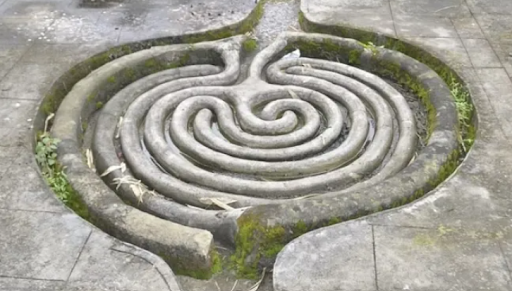Even today, people still talk inquisitively about the epic Mahabharata, the big battle, the wisdom, and the great warriors. The powerful warrior brothers Yudhishthir, Bheem, Arjuna, Nakul, and Sahdev, along with their bride Draupadi, traveled to several places around the Aryavart while they were exiled.
Prince Arjuna was renowned as one of the best archers and warriors of the approximately 5000–year-old Mahabharata era. The Pandavas created a Chakravyuh—a fighting formation in the shape of a wheel—in Rajnaun, a village close to Nadaun in Himachal Pradesh's Hamirpur district, to better understand it, as prince Arjuna described.
It is stated that only Guru Dronacharya, Lord Krishna, and Arjuna were capable of penetrating a Chakravyuh. It is also believed that Arjuna, who among the Pandavas was the only one to comprehend the proper way to enter and come out safely from the Chakravyuh, briefed his brothers about the same while discussing the various combat formations that may be deployed when the great conflict occurs.
Even now, the Chakravyuh (Agyatvas) carved by the Pandavas during their exile may be seen in the Vandkhandeshar Mahadev Temple beneath the Solahsinghi Dhar. Rajnaun is home to one of the many temples the Pandavas erected throughout Aryavart.
One Chakravyuh is in Kurukshetra, and the other is at Rajnaun in the Hamirpur district, according to historians. To view this old legacy, many visitors come to Rajnaun. Balvindra Singh Guleria, a member of the temple committee, asserts that Rajnaun's history is linked to the Pandava era and that there is still proof of this now.
Guleria claims that when Arjuna discovered Chakravyuh in this location, he engraved a Chakravyuh on a stone that is still in its original location. Previously, this Chakravyuh was utilized for the passage of water from a step-well. The water does not reach the Chakravyuh at the moment since the Jal Shakti Department uses this canal to give drinking water to six surrounding communities.
Locals claim that despite the site's historical importance, governments and administration have over the years ignored it.
After the Pandavas were exiled, they also constructed a partially finished temple in Rajnaun. The walls of the temple were about six feet high, and there was no roof over it. Nevertheless, with the aid of the neighborhood residents and the temple committee, the Lakshmi Narayan temple's construction has now been completed. A Shivling was also placed there, and a Peepal tree was planted close by.




